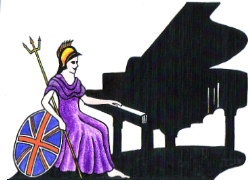Teachers, Accompanists and Piano Entertainers in the UK

UK Piano Page

170 Easterly Road
Oakwood
Leeds, West Yorkshire LS83AD
England
Suppliers of new and reconditioned acoustic pianos
Madbrook Farm
Warminster Road
Westbury, Wiltshire BA133RB
England
OVER 100 PIANOS IN STOCK ! Sales at our stores in
81 Myddleton Rd
London
Bounds Green, London N22 8NE
England
Piano specialists offering new, used and
946-950 Blackpool Rd
Lea
Preston, Lancashire PR2 1XN
England
A&C Hamilton Musical Instruments is Located in
94 Tilehouse Street
Hitchin
Hitchin, Hertfordshire SG5 2DW
England
We stock Fine Quality instruments, modern second-
Music Festival for performers and guests Our 10th
18-06-2022 01:30PM
The Morecambe Bay Piano Group was set up to extend
11-12-2021 02:00PM
The Morecambe Bay Piano Group was set up to extend
08-01-2022 02:00PM
The Morecambe Bay Piano Group was set up to extend
12-02-2022 02:00PM